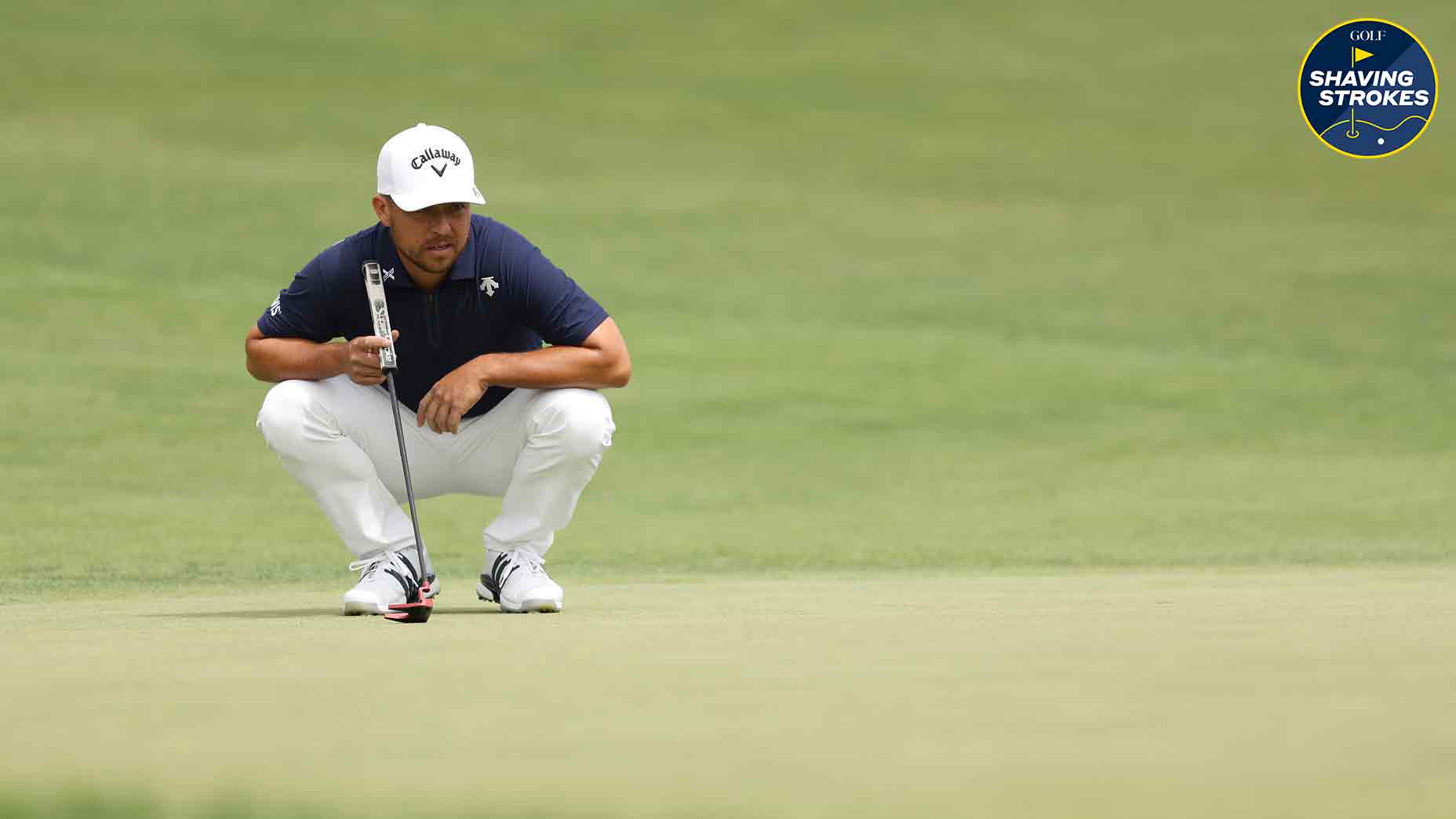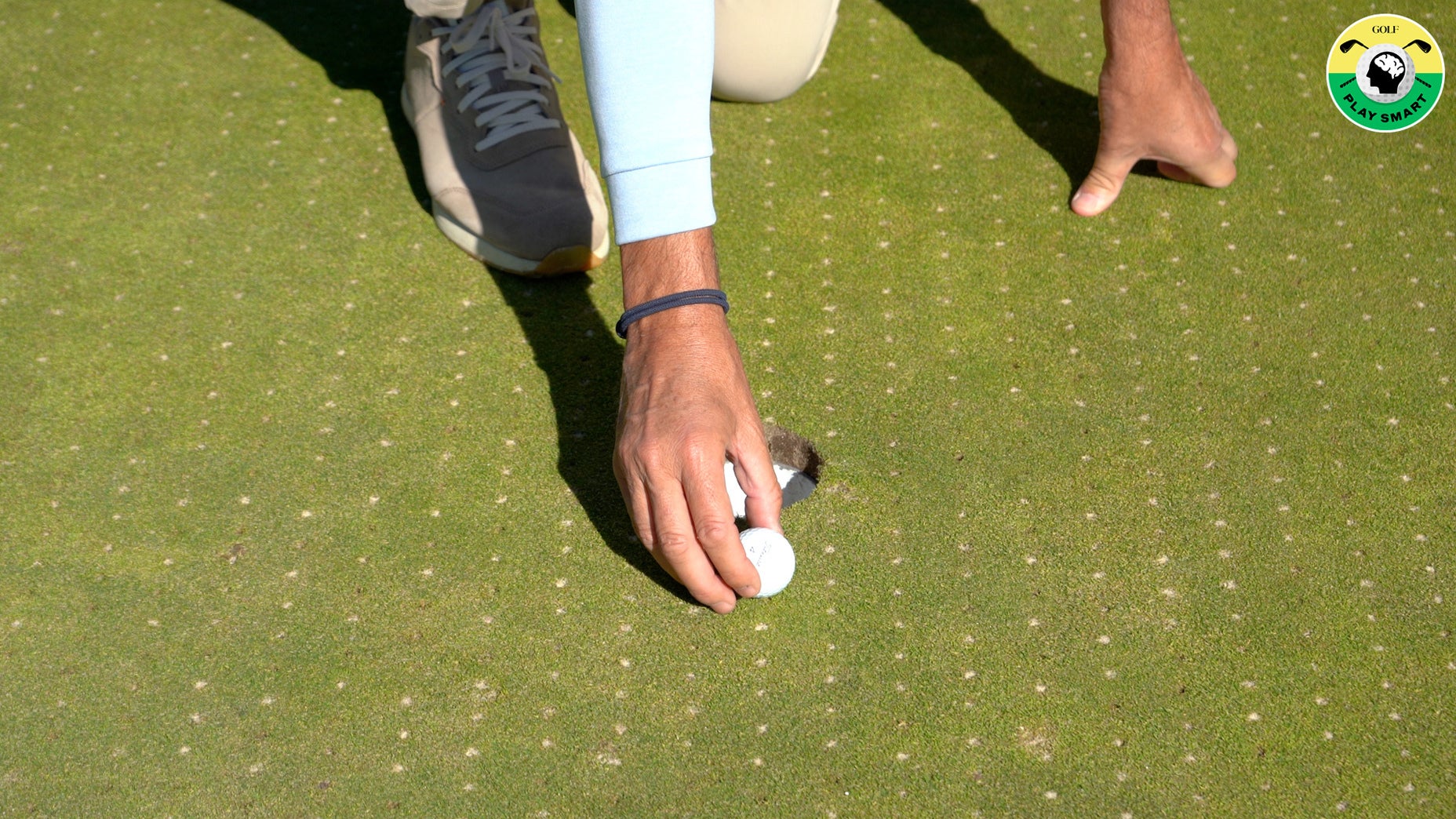No products in the cart.
Return To Shop By:
Zephyr Melton
Zephyr Melton
Johnny Miller is best known for his elite ball striking, but his clever putting tip will have you dialed in on the greens.
Getty Images
Golf instruction is ever-evolving, but the best advice stands the test of time. In GOLF.com’s new series, Timeless Tips, we’re highlighting some of the greatest advice teachers and players have dispensed in the pages of GOLF Magazine. Today, Johnny Miller shares a clever putting tip from our September 1975 issue. For unlimited access to the full GOLF Magazine digital archive, join InsideGOLF today; you’ll enjoy $140 of value for only $39.99/year.
Johnny Miller is best known for three things: being an elite ball striker, that Oakmont 63 and for his legendary broadcasting career. Ball striking might’ve been Miller’s calling card during his playing career, but he made his fair share of putts, too. You don’t win multiple major championships without some excellent putting days.
We’ve covered Miller’s ball-striking keys in Timeless Tips before, so today we are diving into the archives to look back at his putting tips. Back in 1975, Miller shared some of his secrets on the greens with GOLF Magazine, and you can read all about them below.
Johnny Miller’s putting keys
Everything I do in my putting method is for one purpose: To produce solid contact between the ball and the putter face. Anytime you hit the ball solidly, you can count on it staying on line. Putts hit on the heel or the toe are the ones that miss. To develop a solid strike, you must first develop a solid stroke.
If you had a straight-in, four-foot putt, would you try to push the putter head down a line to the hole or would you lead your hands through to the hole? If you answered, the putter head, you are likely an erratic putter because you use too much wrist. Anytime you push the putter head down the line, the right hand is playing a dominant role. When you lead both hands through to the hole, both hands are playing an equal role. Let’s talk first about the hands, which I think are the key to consistency.
Very few golfers lead their hands through to the hole. They become obsessed with the blade of the putter. They concentrate on pushing the putter head along a line, shutting it, opening it or keeping it square; the putter head becomes the focal point of most players’ attention. Unfortunately that attention is wasted, for if there is any fault, it will be at the other end of the putter, in the hands. The putter, being an extension of your hands can only do what your hands allow it to do.
3 key differences between good and bad putters, per research
Once I have lined the putter blade up, I forget all about it. My hands, like the putter face, are set dead square to the hole by means of what I call the palm-to-palm grip. So you understand fully, place your hands on either side of the grip, palms facing, and make sure the putter is square to your intended line. Now place your hands on the grip so that your thumbs run straight down the middle. This immediately sets both your palms dead “square” to the putter face.
As to the actual grip, I recommend a reverse overlapping. In my case, I overlap my left index finger down the first three fingers of my right hand. The only reason it’s not all four fingers is because I have a slight separation between my index finger and the next on my right hand. I’ve found this grip to be the most successful because it places all fingers of my right hand on the club. And most of the sensitivity is in the right hand.
Most of the grip pressure should be applied in the left hand, and the right hand simply rests on the club. You especially should feel the back three fingers of your left hand gripping firmly. This will create an even balance between the two hands and prevent the left hand from breaking down or getting wristy. Beware, however, of gripping too hard with both hands, a very common fault, as this restricts the over-all stroke.
The putting stance you assume should be as natural as possible. Anytime you position your elbows away from your body, like a chicken’s wings, you’re inhibiting the movement of your arms and shoulders; the stroke can’t be fluid. I advocate having the elbows a comfortable distance from the body where they can work freely.
Let’s now look at some other important fundamentals that lead to solid striking. Then we’ll talk a little bit about the stroke.
If you study Jack Nicklaus when he putts, you’ll notice that: 1. He stands slightly open. 2. He plays the ball off his left heel. 3. His eyes are over the ball. These factors, I think, account for Jack’s consistent putting stroke.
I also recommend standing slightly open. It gives you a better ball-to-hole perspective; you can gauge distance better. With the ball forward you can retain a clearer picture of the line along which you want the ball to travel. And finally, positioning your eyes over the ball allows you to sight directly down the intended line of putt.
I personally don’t believe that either hand plays a dominant role in the stroke. Both play an equal part. As a result of the one-piece stroke, the shoulders will rotate slightly, but not consciously. As I said earlier in the article, the less movement in the wrists the better. In the followthrough you want to develop a positive feeling of leading your hands through to the hole. Remember: If your hands go through to the hole, the putter head will too.
Overall, try to keep your stroke as smooth as possible. As an aid, I recommend to you a mental tempo gimmick I have found very useful. This is a simple One-Two count that keeps my mind on the stroke and off the disruptive thoughts that can creep in and destroy my chances of making the putt. The whole backswing is the count of One, and the stroke and follow-through is Two. The count is based on the speed of the stroke as I see it in my mind. First determine your natural tempo, apply the count to it, and follow that rhythm during the stroke. This will give you a nice flowing action and not a jerky, hesitant stroke. When under stress my caddie, Andy Martinez, is always reminding me of the count.
This Tour-proven drill will dramatically improve your putting
By:
Zephyr Melton
I’ve never been much of a spot putter. In other words, I don’t pick a spot between the ball and the hole to line up to. Spot putting can drain concentration, because you have to keep checking to make sure you’re lined up with the right spot. And if you lose the spot, you can waste a lot of mental effort trying to relocate it. Instead, I visualize the line from the ball to the hole, set my blade the approximate degree left or right of the hole, then just lead my hands down the line. This method is so much simpler and keeps your mind free to concentrate on distance.
While we’re on the subject of visualization; you must see the successful outcome of any putt you stand over, in your own mind, regardless of how long the putt may be. If you program a positive thought, you’ll get a positive result. Actually “see” the ball falling right into the hole!
If you watch any top professional, you’ ll notice that he has a certain pattern of addressing the ball. The pattern is machine-like. I, too, have my own pattern. First I look at the putt from behind and do all my visualization. Then I step up to the ball. Initially I place my feet together, then I spread the right foot out, so my stance is about shoulder width. I take one look at the hole, then look back at the putter to check my alignment. (Andy Martinez also kneels directly behind me and tells me when I’ve got it on line.) Then a second look at the cup, to get a feeling of the distance, and the moment I look back at the ball I draw the putter back. Two looks — that’s the most I ever take.
What purpose does the system serve? Anytime you’re systematic you’re being positive; your mind is on making the putt and not on other things. Program positive action into your mind and, again, the results will be positive.
Paul Runyan, one of the greatest putters ever, used to spend several hours a day on the putting green listening to the sound the ball made coming off the putter head. He used to program his mind to absorb the feeling of solid contact — so that it became a habit. When applying the thoughts I have outlined to your own stroke, I suggest you also try to hit the ball solid every time. In doing so, though, make sure your attention is on your hands and not the putter head.

Zephyr Melton
Golf.com Editor
Zephyr Melton is an assistant editor for GOLF.com where he spends his days blogging, producing and editing. Prior to joining the team at GOLF, he attended the University of Texas followed by stops with the Texas Golf Association, Team USA, the Green Bay Packers and the PGA Tour. He assists on all things instruction and covers amateur and women’s golf. He can be reached at zephyr_melton@golf.com.
About author
Related posts
By: Tom Stickney , Nick Dimengo November 4, 2024 Wondering how you can improve your short game? Top teacher Tom Stickney provides a shot guide... Continue reading
By: Jack Hirsh November 4, 2024 The author’s customized Hazy Sticks. Jack Hirsh/GOLF While this week might be a tough time to be a Nittany... Continue reading
By: Nick Dimengo November 4, 2024 Rickie Fowler gives you the tips you need to execute the ideal flop shot. Getty Images Let’s be honest... Continue reading
By: Dylan Dethier November 4, 2024 Rory McIlroy, Tiger Woods, Nelly Korda, Keegan Bradley, Rory McIlroy, Adam Scott, Tyrrell Hatton, Charley Hull (clockwise from top... Continue reading
By: Zephyr Melton November 4, 2024 Follow Lefty’s advice to fix your chipping. Getty Images Welcome to Play Smart, a regular GOLF.com game-improvement column that will help you become a... Continue reading











Add comment